www.johntyman.com/peru/16.html
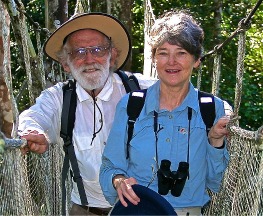 |
CULTURES IN CONTEXT PERU The Incas and Prehistoric Cultures IV: INCA CULTURE 4.7: Moray |
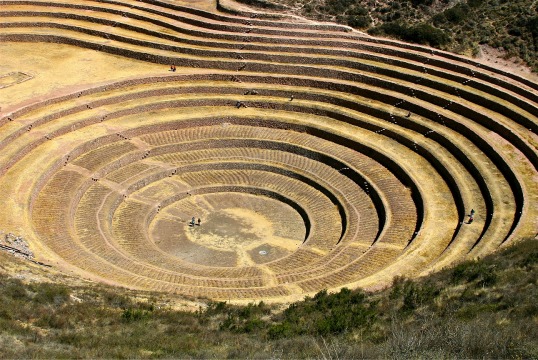
166. At Moray, 50 kms from Cuzco, the Incas built three large circular tiers of terraces, 30 metres deep, in natural sinkholes on a limestone plateau, at an elevation of 3,500 metres overlooking the Sacred Valley. The terraces are equipped with staircases that allow people even today to walk from the top to the bottom of the bowl. |
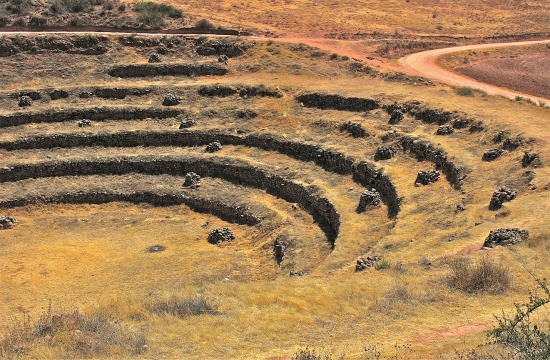
167. Neglected in later years, the terraces, as a tourist attraction, were being repaired when I was there in 2007. Sadly, they sustained significant damage in 2009-2010 when there were landslips following heavy rain … though it had hitherto been believed that the lowest levels drained perfectly, never flooded and had underground channels allowing water to drain away. |
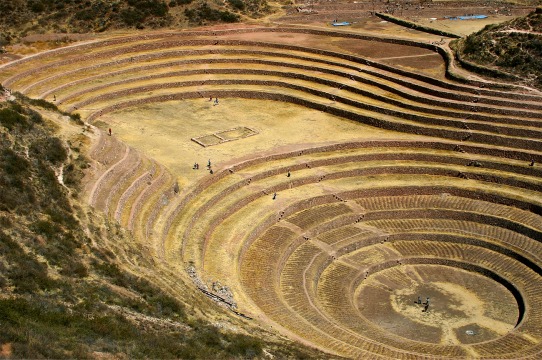
168. The purpose of these concentric terraces is not fully known but because of the small area which could be cropped here, the terraces may well have been an agricultural research station (instead of a food producing area) at which native plant species were tested and/or modified for human consumption. Their depth, design, and orientation with respect to wind and sun created a temperature difference of 15 °C (27 °F) between the top and the bottom terraces. |
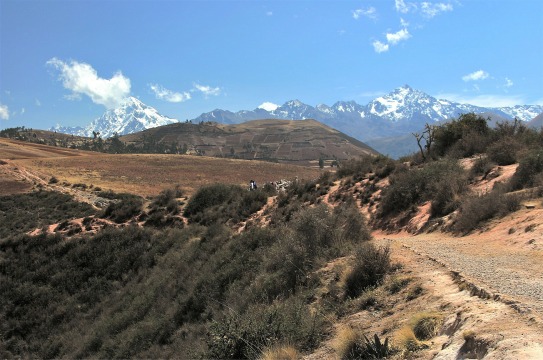
169. The range of microclimates obtained thereby not surprisingly matched many conditions within the Inca empire, notably changes between the coastal fringe and the Sacred Valley.… leading to the conclusion that these terraces served as a test bed to see what crops could grow where. Taking advantage of the different climatic conditions at the different levels the Incas were able to modify and hybridize crops to suite these differences in microclimates. (View of the Andes from Moray) |
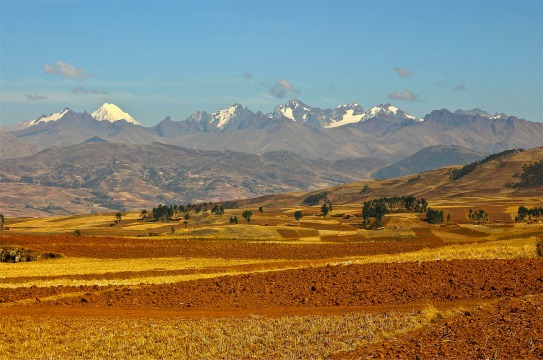
170. The Inca skill in agriculture would have helped to ensure that all suitable land in the region could be cultivated, and enough food produced to satisfy the empire’s growing population. Studies have also shown that many of the terraces contain soil that must have been imported from other parts of the Sacred Valley. (Cool temperate summer crops on the Altiplano) |
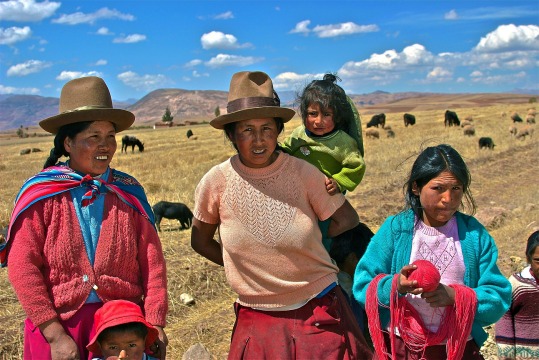
171. The lands surrounding these terraced amphitheatres are cold and windswept, and suited only to seasonal grazing and summer crops. Terraces like those at Moray, below ground level, would have offered more favourable conditions for plant growth. Warm temperate crops could have survived even in winter on the lowest terrace and cool temperate varieties above. The effects created by Moray’s terraced levels are similar to those of a large greenhouse and thus helped to promote plant growth. (Semi-nomadic summer herding near Moray.) |
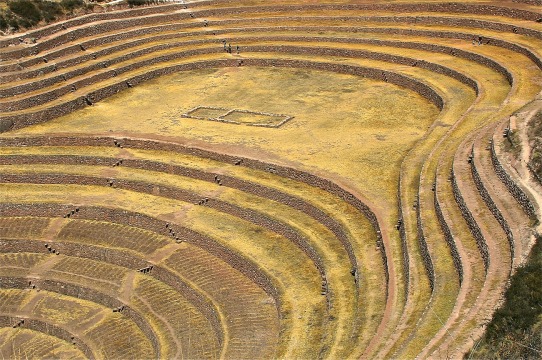
172. Actually no one knows for sure how the terraces were used: and since no one has yet found any canals to provide water to the crops, the Moray terraces could even have been an aesthetic statement illustrating Inca power and creativity. |
![]()
![]()
Text and photos by John Tyman
Intended for Educational Use Only.
Contact Dr. John Tyman at johntyman2@gmail.com
for information regarding public or commercial
use.
![]()
www.hillmanweb.com
Photo processing, Web page layout, formatting
and hosting by
William
Hillman ~ Brandon, Manitoba ~ Canada